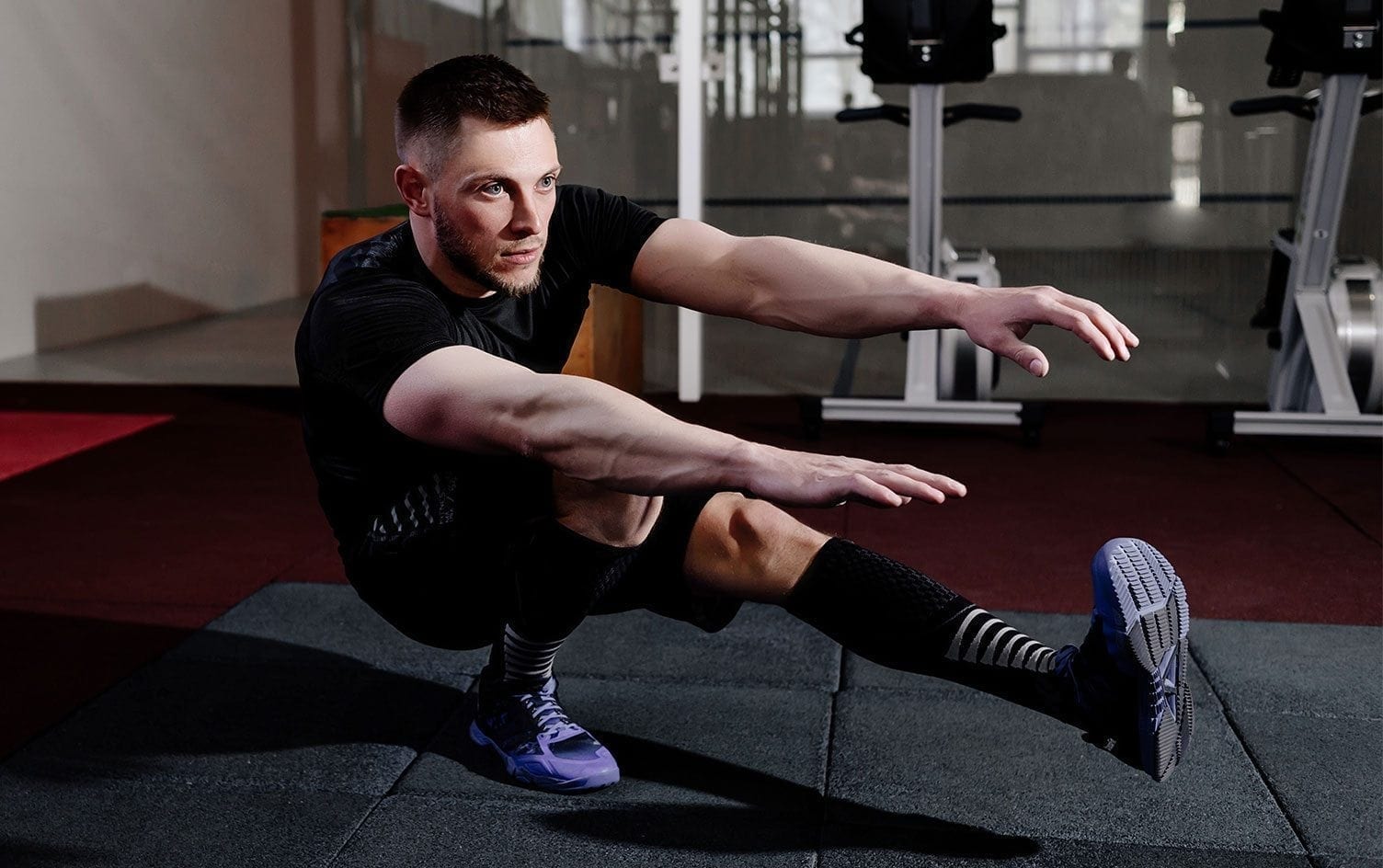If you’re proficient at squats and looking to progress the exercise, try this challenging single-leg variation, called the pistol squat.
The pistol squat is a great performance goal to take your lower-body training to a new level. Whether you are a performance-based athlete, chasing after your kids or walking your dog, you need strength and stability on each leg — which is why you should do single-leg training.
BREAKING DOWN THE MOVE
To master this move, be mindful of the following key components to a good squat. Then, incorporate the single-leg variations in your weekly workouts. Here are four key components to mastering the pistol squat.
1. PLANK
Maintain a neutral spine and active tension in your core to stabilize the spine throughout the exercise.
Tip: Think about how your core feels when you perform a forearm plank. If your muscles are all engaged, the plank is “active.” Use that same feeling before you begin your squat and maintain a good “active plank” throughout. This will help your balance.
2. HIP HINGE
Begin the squat with a hinge rather than bending your knee first. Keep your hips square and pelvis level. Push the hips back before bending your knee to lower. This helps protect the knee and brings the focus to a hip-driven squat versus putting more emphasis on the quads and excessive force on the knee.
Tip: To do a good hip hinge, stand a few inches from a wall with your back toward it. Push your hips back until your glutes touch the wall. Your hips crease on a hinge rather than your back or knees bending.
3. SQUAT
The lowering (eccentric) phase should be controlled. Pull yourself down toward your heel by beginning with a good hinge of the hips. Think of pulling with the hamstrings to control the descent rather than letting gravity move you.
Tip: Keep your heel on the floor throughout. The knee stays in line with the toes and hip. The pelvis should remain level and square, not tilted or rotated. Avoid the “butt wink,” where your pelvis tucks under (a posterior tilt), at the bottom of your squat. If that happens on your squat, stop lowering into the squat before the wink.
4. HIP EXTENSION
Drive up from the bottom of the squat by pressing your foot, and specifically your heel, into the ground and engaging your gluteal muscles.
Tip: At the top of the squat, your hip should be fully straightened.
PUTTING IT ALL TOGETHER
Ready to master the pistol squat? Put 1–4 together. Stand on one leg with a long spine and engage your core. Initiate the exercise with a good hip hinge and slowly pull yourself down. Keep your knee in line with your hip and toes and avoid the butt wink at the bottom. Push hard into the floor with your heel and power up with all that new hip and leg strength
READ MORE MASTER THE MOVE
SINGLE-LEG VARIATIONS TO BUILD THE MOVE
If you want to build up to the pistol squat, incorporate the following variations in your weekly workouts. In addition to getting you physically stronger, the variations teach you how to progressively approach the pistol squat.
1. SINGLE-LEG BRIDGE
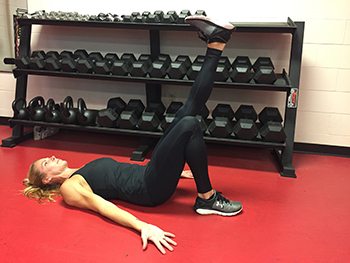
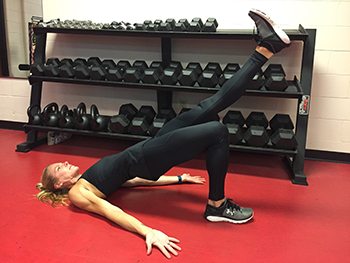
Balance is challenging when you initially progress to one leg. Lying on your back allows you to work hip and single-leg strength in an easier environment so balance isn’t part of the equation. The floor also helps reinforce good spinal positioning (plank) when the hips are lowered to the floor. An added bonus is that you can visually see if your hips are strong enough to straighten all the way. The single-leg hip bridge equates to pushing yourself up from the bottom of the pistol squat.
2. 2-to-1 SQUAT

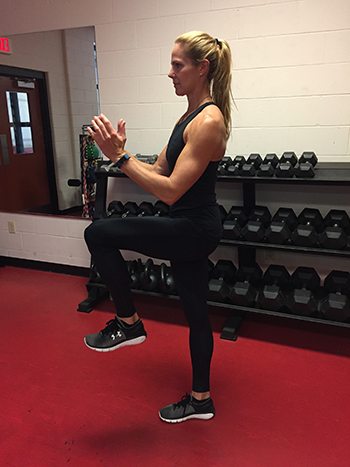
Similar to the single-leg bridge, this variation builds strength from the bottom of the squat but also adds a balance challenge. It is difficult to lower on one leg in a pistol squat. If the core, hip and leg aren’t strong enough to control the pull downward into the squat, you may see your knee collapse inward or flare outward to compensate. Begin by standing on two feet. By lowering down into the squat on two legs, you can work on maintaining a long spine, neutral pelvis and good knee alignment. As a general rule, your knee should stay in line with your middle toe. To come up, shift your weight mostly to one leg while keeping the ball of the other foot on the floor to help. Progress this variation by going down on two legs and shifting all your weight to the other foot before coming up on one.
3. NEGATIVE SINGLE-LEG HINGE

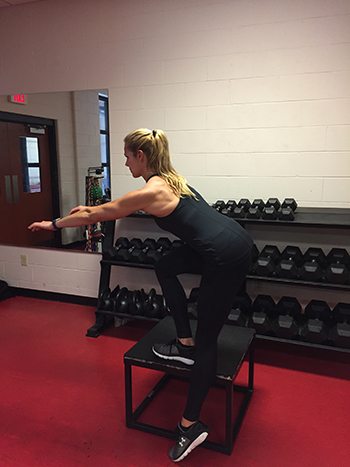
Once you’ve demonstrated proficiency in the first two variations, add the negative hinge. A good pistol squat requires more than leg strength. You need stability in your spine, pelvis and knee, as well as hip mobility and balance. Working a negative allows you to slow down and focus on each part of the movement. The negative means you lower slowly and resist gravity pulling you down. It builds strength while teaching your body to control the descent. Keep in mind each key point you worked on in exercises 1 and 2. Stand on a box or weight bench with one foot. Push the hips back to load your hips and hamstrings. Slowly pull yourself back and down toward your heel while trying to remain as upright as possible throughout your spine. Once your foot touches the floor, get back up any way necessary in order to do the next rep. If you need to push off the floor, go ahead. To progress, lightly tap the floor at the bottom of the hinge and push your foot into the box to come back up.
4. BENCH PISTOL SQUAT

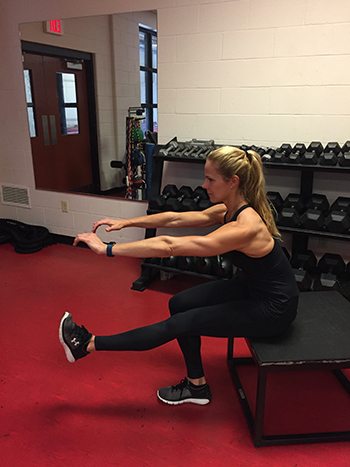
Stand on one foot in front of a stable chair, box or bench. Begin with a good hip hinge, pull yourself down to the bench with a good hamstring curl. Tap the bench with your glutes then drive through your heel and hips to standing. Maintain a good plank throughout. If you’ve mastered the other three exercises, this will be easier than you think!
